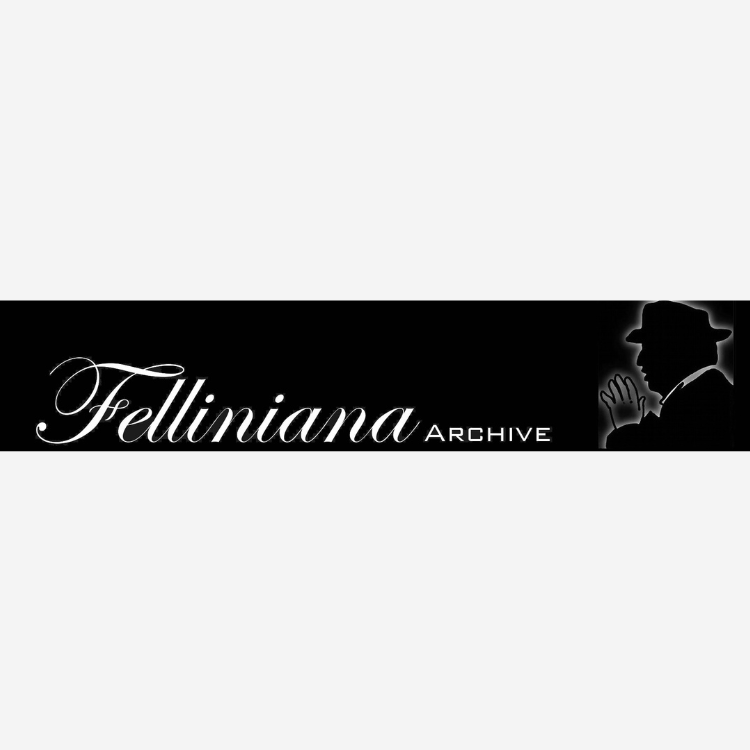Tutto Fellini Review - FW Biz Press
Fort Worth Business Press, 14 August, 2006, art & film critic, Michael H. Price, reviews the Tutto Fellini film festival at The Modern.
Fellini exhibition broadens Cultural District mission
Modern Art Museum hosts month long retrospective
Michael H. Price - August 14, 2006
The occasion is called Tutto Fellini. And as occasions go, it is a lengthy one — running from Aug. 18 through Sept. 3 at the Modern Art Museum of Fort Worth.
The sustained event is an adventure in art-museum exploration. Within Fort Worth’s west side Cultural District, Tutto Fellini is the first major touring exhibition to be based entirely in motion-picture footage. Taken together, the films seem almost to summon the restless soul of their maker, the screen director and dream-state storyteller Federico Fellini (1920-93).
Such comparatively well-known entries as La Dolce Vita, Fellini Satyricon and La Strada lie in wait, in addition to formative works from the 1950s, a compelling short film called “Toby Dammit” (excerpted from a multiple-director feature of1968-69 called Histories Extraordinaires, or Spirits of the Dead, derived from E.A. Poe), and such late-in-life reassertions of mastery as Ginger and Fred (1986) and The Voice of the Moon (1990).
This comprehensive retrospective examines in particular detail one crucial role that a museum can play in advancing its mission toward popular acceptance and understanding.
That role is to establish cinema as an art form on a par with the more readily perceived vehicles of sculpture and painting and so forth.
The cinema as a class could argue a persuasive case for itself as art. And how else to explain the sharper accomplishments of the likes of Orson Welles and Akira Kurosawa and Fellini himself? But oftener than not, the commerce-driven movie industry has devoted its century-and-change history more strictly to the easy gratification of entertainment value than to any consciously applied artistry.
Much accidental art has taken shape, of course. And indeed, it was the lowly American B-movie sector, with its cheap-but-inventive escapism for a Joe Average audience, that helped to inspire both the New Wave movement in post-World War II French cinema and the Italian Neorealist movement from which Fellini emerged as an artist with whom to reckon.
Generally speaking, though, the movie industry stays too busy attempting to sense the next ticket-selling trend to agonize over whether it might be making Art-with-a-capital-A.
An art-museum imperative, then — apart from the nagging question of “Who gets to call it ‘art,’ anyhow?” — is to isolate cinema as an art form (sometimes latent or subversive, sometimes full-blown and rampant) and place such examples within a meaningful context alongside examples of art in the more conventionally regarded media. Manhattan’s Museum of Modern Art has been doing so for generations, now, with an aggressive film-curatorial agenda that has set an influential if inimitable standard.
Now, to pronounce Federico Fellini an artist is something of an easy call. Even people who never have sat through a Fellini film will sense as much. To place Fellini in an art-museum context as a self-contained exhibition, however, is a bolder move that propels the Modern Art Museum of Fort Worth to the front ranks of curatorial progressiveness. No devoted exhibit-goer can afford to miss this one, for Tutto Fellini is a benchmark for the Cultural District — and the first in which all the pictures central to the exhibition possess literally a kinetic thrust.
The party responsible is the Modern’s Tina Gorski. Gorski, who directs auditorium programming, not only has imported the more than 20 essential motion pictures from Italy’s Cinecitta International. She also has strengthened the exhibit with learnéd commentaries and introductions from people who know film as a cultural force. In the interest of a fuller disclosure, I should mention that I will take part at 4p.m. Aug. 27 with a prologue to the 1969 film Fellini Satyricon and in various discussions throughout the run of the exhibit.
One often hears the question in such a movieplex-dominated market as Fort Worth: How to watch a movie at a museum?
Simple: One queues up for a ticket, parks one’s carcass in the auditorium, and kicks back to absorb the picture — the painting-in-light, you might say — as it is borne upon a high-wattage beam from the projection booth onto the screen. The Modern stages such programs as a matter of routine, of course, with the weekend series called Magnolia at the Modern, which has become Fort Worth’s first successful long-term art-film series since the closing of the Heights Theatre more than 20 years ago.
Meanwhile at the nearby Fort Worth Community Arts Center, an exhibition called TuttoFelliniana — several hundred movie posters of great rarity — is on view through Aug. 31.
A schedule-in-capsule follows. Box-office information and program details can be found on the Web at www.themodern.org, under the “Film Series” link.
ContactPrice at mprice@bizpress.net.
------------------------------------------------------------------------
Online at: http://www.fwbusinesspress.com/display.php?id=5227
------------------------------------------------------------------------
Questions & Comments FortWorthBusinessPress.com. Last updated on 10-May-2006.
Copyright © 2006 by Fort Worth Business Press.


